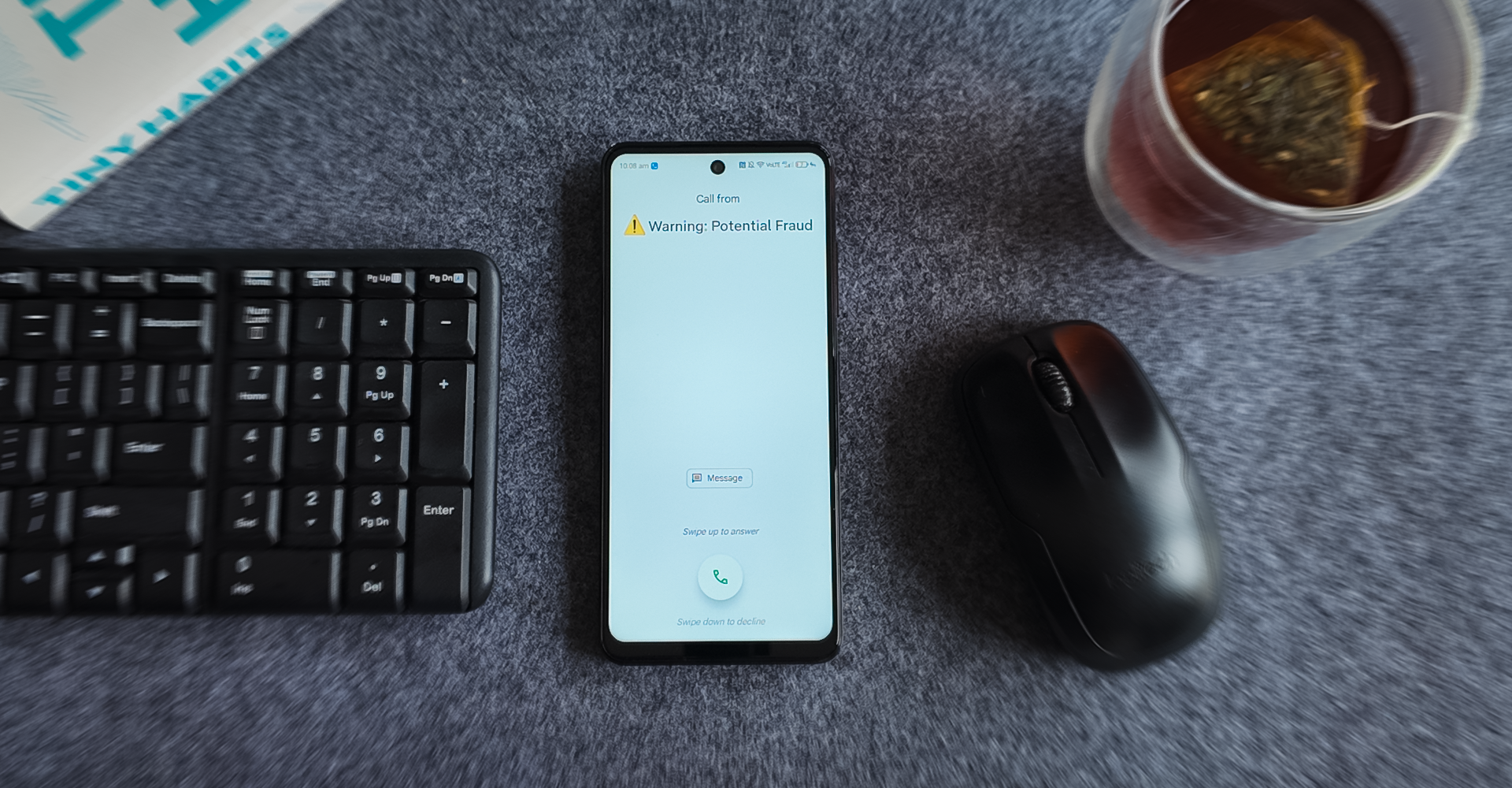Reporting SMS and MMS scams to Telstra - what you need to know
We’re helping all customers on the Telstra network join the fight against scammers by reporting SMS and MMS scams to a national phone number - 7226. Here's everything you need to know about the initiative and how it works.

How does Telstra determine what is a scam and what is not?
The Cyber Security and Engagement team assesses suspicious patterns and characteristics, along with other data including the number of messages sent to determine if it is a scam or legitimate. If a scam is identified, we will block future messages with the same criteria or near matches.
How does the technology work?
It uses SMS technology, just like sending an SMS to friends and family. When you forward a message to 7226, Telstra experts review it and confirmed scams are then added to our SMS content filtering capability to ensure they are blocked going forward. Only a limited number of Cyber Security staff that are required to determine if a text or MMS is a potential scam, have access to the platform, where the security and logs of the platform are constantly reviewed.
All SMS and MMS sent to 7226 by our customers are housed in Telstra servers located in Australia.
7226 can only be used to report suspected SMS or MMS scams.
Will Telstra send return SMS’ to customers? If not, why not?
No Telstra will not send a confirmation SMS or response when reporting an SMS scam. Every time a customer sends us a potential scam SMS it helps feed our intelligence and if it is a scam, we can block it relatively quickly helping to protect others from being scammed, like your grandparents, parents and all your family and friends.
What if I report a suspected scam to 7226 but I still keep receiving the same one?
In some cases, customers may report a suspected scam to 7226 however it may be a legitimate text message from a legitimate brand. And in some cases, customers report the suspected scam a few days after receiving it, hence we haven’t reviewed it and blocked it if it is a scam.
If you keep getting the same message, we encourage you to contact the company purporting to be sending the message through their official channels (and not by clicking on any links in the message).
How long does it take to block messages identified as scams?
Once a message has been confirmed by our technology and our experts as a scam, we can block it. It then takes mere seconds for future messages to be blocked.
What information will be used or shared that is sent to report scams to 7226?
We use the information only for the purpose of identifying and blocking scam SMS
How will Telstra ensure customers privacy?
Telstra will not share personal information relating to the customer forwarding on the scam message to 7226. If the need arises, where we are seeing large numbers of legitimate SMS being reported for example, then only the generic de identified information, not the sender’s details, would be shared with the company purported to have sent the scam message.
Does this mean Belong, Boost and all our Wholesale customers will be able to use 7226 to report SMS scams as well?
Yes.
Will Telstra charge the customer to forward scam SMS messages through to 7226?
No. Telstra will not charge customers for forwarding text messages or MMS to 7226.
Why did you pick 7226 for reporting suspected SMS scams?
If you have a look at your phone’s keypad, 7226 spells out scam (7=S, 2=C, 2=A and 6=M) it is an easy name to remember. It is also an established global standard, for example in the UK they use 7226 as well.
Do other telecommunication companies use 7226 as well?
All Australian telecommunication carriers have access to this service and can voluntarily use the short code to report suspected SMS scams.
Has the regulator and government endorsed this approach to using 7226?
The Australian Communications and Media Authority (the ACMA) announced this number in December 2022.
Do you share information around scams with other carriers?
As part of the ACMA code on telephone and SMS scam reduction, carriers can, and do, perform requests to "trace back" sources of scams. This is to stop the problem at the source and focusses on sharing what is required for a carrier to trace the message to its originating point. Also, most carriers participate in industry forums discussing scam reduction so we can all do our part to help Australian telecommunication users.
Will this stop all scam SMS messages from reaching Telstra customers?
Sadly no, but it will go a long way to help protect our customers. These scammers move at lightening pace and as soon as we block one number, they will revert to another one. That is why it is so important for customers to provide us with this feedback.
Is 7226 just for spam SMS or can you report calls too?
7226 is for SMS/text messages where they can be forwarded. The 7226 number is not used for reporting scam phone calls.
What volume of reports does Telstra field through 7226?
We’ve been trialling the SMS scam reporting with a small number of Telstra employees and are looking to scale our volumes. At this point our volumes are not significant although we expect them to increase.
How does 7226 work with Cleaner Pipes?
Telstra’s ‘Cleaner Pipes’ initiative is working to stop scams before they hit our customers, helping reduce instances of customer data being compromised through malware, ransomware and phishing. 7226 is part of this program of work, as any tool that helps our customers stay safe from scams is a win.
Will a similar solution be introduced for emails?
Telstra webmail and BigPond email have had a ‘Mark as Spam’ function operating for over ten years, and most other email clients (icloud/gmail etc) will allow you to report emails that you believe are suspicious or scams, and most have the ability to block individual senders.
What are the most common SMS scams at the moment?
Brand impersonation (for example scammers trying to impersonate companies like Telstra, Banks, Australian Taxation Office, Linkt etc). Scams which purport to represent legitimate brands which consumers may be familiar with and try to entice recipients to visit a malicious website, or, make a telephone call, to someone impersonating that brand.
Does Telstra block all incoming scams via SMS and MMS?
While Telstra can and does block millions of scam messages each month, we can’t catch everything. Our technology is evolving so it’s important that everyone remains vigilant and alert to the rise in scam activity, and we all have a part to play in helping to secure our personal and private data and help protect it from criminals who want to profit from it.
Does this technology work on both Android and Apple devices?
Yes, it works on any mobile device that can receive and forward SMS and MMS.
What other mechanisms does Telstra have for customers to report scams?
Telstra customers can report scams via:
- SMS/MMS - 7226
- Email/calls/SMS/MMS - scams@telstra.com, or phishing@telstra.com
- Website - https://www.telstra.com.au/forms/report-misuse-of-service
How do you forward an SMS to 7226?
It is easy and remember not to click on the link when forwarding to 7226.
If you are using an iPhone: remember don’t click on the link;
- Touch and hold the message bubble you want to forward, then tap More.
- Select additional text messages, if desired.
- Tap Forward and enter a recipient. This is where you enter 7226.
- Tap Send
If you have an Android device using the default Messages app: remember don’t click on the link
- Tap and hold on to the message;
- Tap on the three-dot menu button and hit Forward;
- Select 7226 as the recipient who you want to forward the message to and hit Send SMS.
It’s as easy as that. One thing to note is that you won’t receive a response once you report the number, but rest assured knowing we have received your report.
What to look for in a spam or scam SMS or MMS
Telstra observes many of the most common SMS and MMS scams circulating. While SMS and email scams often bear typos and blatant demands for personal information and payments that can seem more obvious, others may be well written and avoid these kind of hallmark identifiers.
The best defence against scams therefore is to remain sceptical of all unexpected communication regardless of the purported sender.
It can sometimes be difficult to tell an illegitimate message from a real one, but here are a few pointers that can help:
Unexpected SMS messages asking for your personal details, advertising promotional material or asking you to click a link.
SMS and MMS numbers that start with ‘19XX’. These are charged at a premium rate and can be expensive. Also look out for numbers that start with an international code other than +61 (Australia’s country code).
Texts promising unexpected prizes that require you to send money to claim them.
Texts that encourage you to click a link, which may then ask you to install a piece of software on your mobile phone or tablet. Just like computers, malicious software can put your phone and personal information at risk.
What should I do if I think my identify has been compromised?
If you feel at any time your ID may have been compromised, firstly, change all your passwords, in particular any bank or financial institutions and obtain a copy of your credit report. Please also reach out to IDCare - Australia and NZ national identity & Cyber support service - Australia and NZ national identity & cyber support service. IDCARE is an independent organisation that provides free support for those impacted by scams or fraud. Telstra’s website also has tips on Cyber security and safety.
Further information can be found here: https://www.oaic.gov.au/privacy/your-privacy-rights/data-breaches/Identity-fraud
And of course, if you are in doubt, call the company’s official number and check to see if it is real or a scam.


